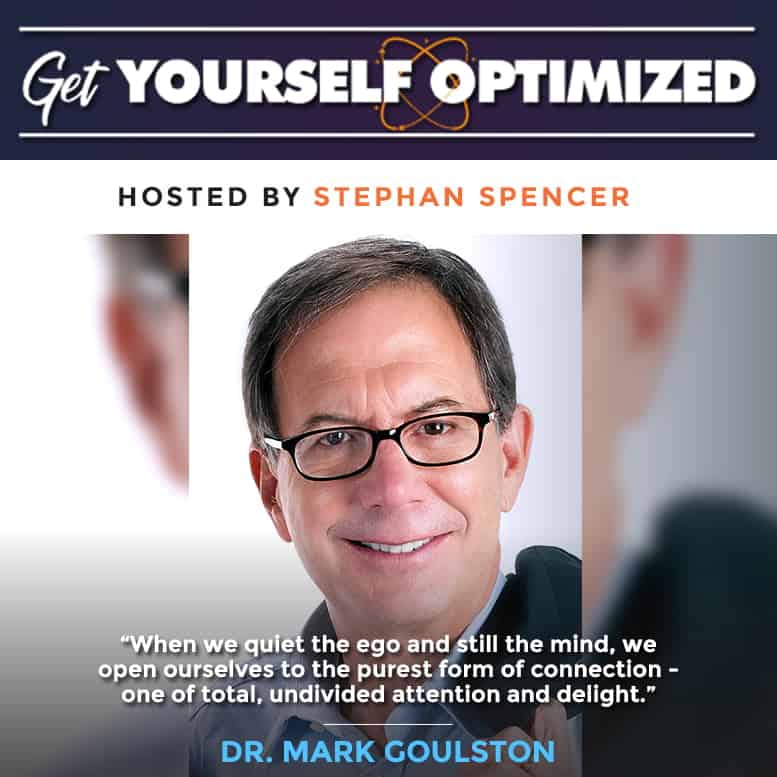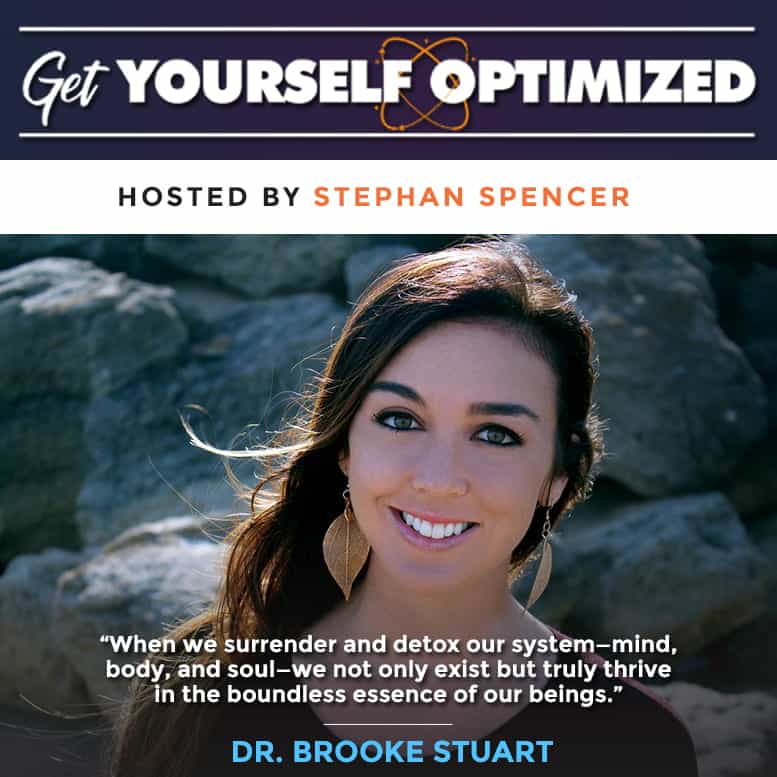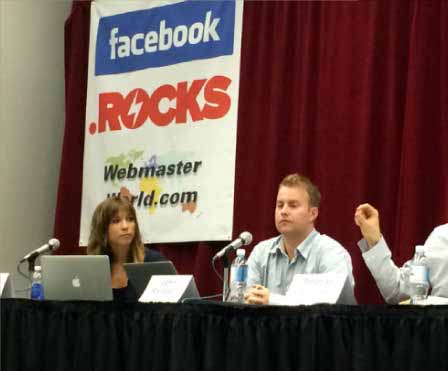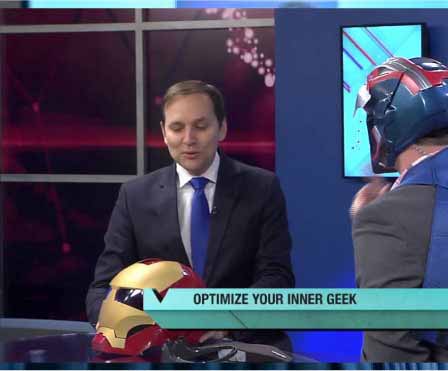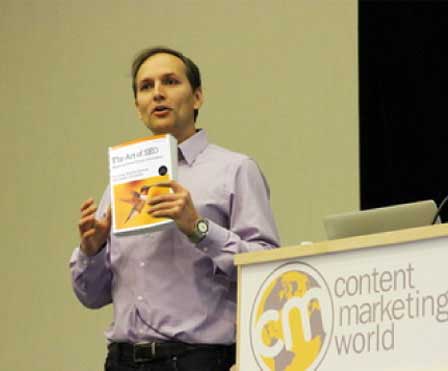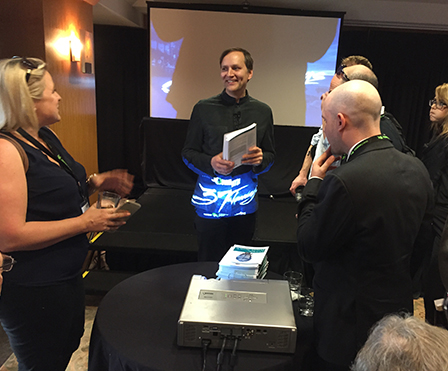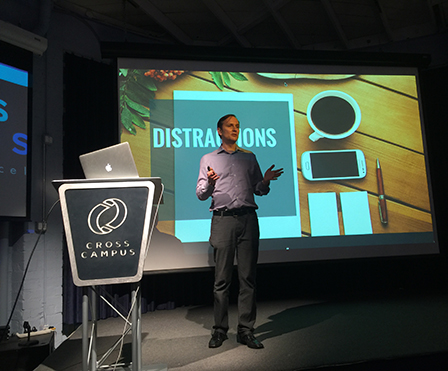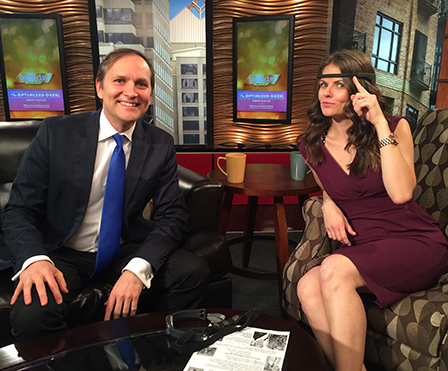In this Episode
- [02:16]What’s the big problem — and the solution — with regards to how we stand, walk, run, and otherwise do everything on our feet?
- [05:06]You walk 2-3 million steps per year, which can lead to problems if you’re not walking properly. Gordon talks about this, revealing the problems with going barefoot, too much cushioning, and molded shoes or insoles.
- [09:26]We hear about Gordon’s background in sports, and how he started to get involved in the kind of work he does now.
- [14:21]How do you compensate for the differences between one person’s left and right feet?
- [17:18]Gordon produced the first round of a foot suspension system about a decade ago, he explains.
- [21:50]How do you diagnose your foot or alignment problems without having access to the laser device that Gordon brought to the Bulletproof conference?
- [24:12]Gordon talks about how to “get your guitar in tune,” as he puts it (in other words, to get your feet and legs working in harmony).
- [26:20]If someone wants to get diagnosed with Gordon’s laser device, how can they get that done?
- [30:27]Gordon offers some guidelines on when to worry about what you’re wearing on your feet.
- [37:14]We hear about ALINE’s options for kids, and Gordon shares his thoughts about the best time to start having your kids use these products.
- [39:43]Gordon talks about the shoes with wheels in the heels.
- [41:01]Are there ALINE options for high-heeled shoes? Not at the moment, Gordon answers.
- [42:52]Stephan talks about resistance stretching and the conversation he had about it with Luther Cowden.
- [44:08]Gordon responds by talking about Active Release Technique.
- [48:00]If you can’t use the foot suspension system, something really isn’t moving well and there’s a big problem. Gordon gives advice on how to use it and when to incorporate it into sports.
- [49:22]We hear about how footwear choices can change the appearance of your body.
- [51:57]Do you need to worry about what footwear you’re wearing if you’re sitting down?
- [54:54]Gordon talks about the products available at ALINE.
Transcript
Hello and welcome to Get Yourself Optimized. I’m your host Stephan Spencer. Today, we have Gordon Hay with us. Gordon is the co-founder, inventor, and creative visionary for ALINE, the foot services provider to ESPN Summer and Winter X GAMES. Also, ALINE has evaluated the lower body mechanics of over a hundred thousand diverse athletes from Olympic medalists, NFL, and PGA players. I got to experience ALINE myself recently at the Bulletproof conference which is where I met Gordon. I got hooked up to this device that measured how I was standing and then he was able to correct it with this amazing Insole which we’re going to learn all about, as well as the biomechanics of walking and running and all that sort of good stuff. Gordon has 20 years of invention patent and production experience in bio-mechanical technologies. His passion for human movement is a result of his childhood battle with severe asthma. He’s finally able to overcome that asthma as a teenager and then he jumped into extreme sports. Gordon trained at the Medical College of Wisconsin, receiving a board certification in Pedorthics. Gordon, it’s great to have you on the show. Thanks for joining us.
Hey, Stephan! It’s great to be here. Thanks for the great intro. I’m ready to talk about feet, legs and help people move 2 to 3 million steps a year.
Gordon, what is the big problem with our feet, the way that we stand, walk, run, and do sports and what is the solution?
It’s something you’re going to really love learning about. I’m going to give up my age here for a minute but pretty close to 30 years, I really started figuring this out, the problem. The problem is most people, when I say most people, close to 90% of people is what we found out of assessing well over a hundred thousand people, close to 90% of people are walking 2 to 3 million steps a year in such an unfavorable way that they are being robbed of their health and performance. Suppose I’d tell you you’re going to invest your time and go out for a run, you can go out and get your heart rate up but if you’re getting your heart rate up and you’re aging or damaging your joints at the same time, it’s really counterproductive. Most people go to a gym to get a workout but they’re unfavorable. They’re actually doing unfavorable damage to their legs because of the way the influence of the flip to the leg is affecting them. What we did for the past 10 years, ALINE team invented a simple device and a laser in front of it. We showed people how they stand and how they move.
When I say most people, close to 90% of people, [00:04:09] that divides their foot from the center of their second toe and goes to your knee, most people were so far out of alignment standing and moving. Not just out of alignment, asymmetrically out of alignment which causes all these puzzles we need to solve. Some people can be trending outwardly on the left leg and in on the right. Everybody’s heard about pronation and supination and all these. People describe them as negatives but they’re not, pronation and supination are quite normal, natural functions of the foot. Everybody has been trying to find solutions, what you’re trying to do, what’s your solution, what’s your problem. Are you just trying to be a better golfer, or to run better, or do you want to eliminate pain, or you’re 50 years old and you can’t run the way you used to, you wonder why or you attribute it to an old injury and try to figure it out. Well, we’re helping people really get to the nuts and bolts by figuring it out. Face it, the first thing to hit the ground in the morning, hopefully your feet, hopefully the last thing to leave the ground at night are your feet. You walk all over. What are they doing with the leg? This is what we did Stephan, 10 years, we showed well over a hundred thousand people in the general public and then we took it to the most extreme and precision sports in the world.
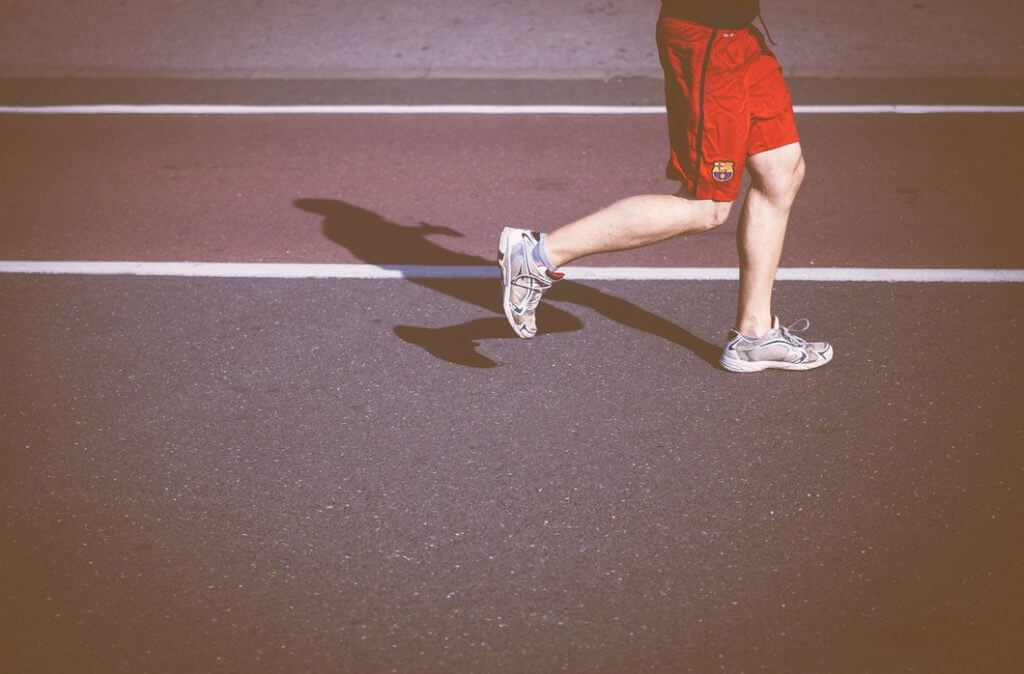
You’re helping people to avoid prematurely aging their joints, getting issues with their knees, with their hips, and so forth because a lot of times, as you’re older, you end up with a knee replacement surgery or heaven forbid a hip replacement surgery and a lot of this has to do with the way that you walk and the damage that you inflict on your body with each step.
Without question. You walk 2 to 3 million steps a year. Let’s just talk about walking and running. You walk a lot a bit, you run a little bit, you walk a lot a bit, you gym a little bit, you walk a lot a bit, you golf a little bit. You really want to find out where that daily drip of unfavorable motion is. Most people aren’t walking well and really, to get to the root of this, let’s look at our world. At Bulletproof, you probably noticed I had a line. I didn’t get out of my chair for close to 12 hours a day for 3 days. The line of questions, everybody’s standing there in their barefoot shoes to sandals to their unlaced skateboard shoes to their dress shoes. Shoes affect the way you move. Our world is not naturally born. Everybody asks me, “Hey, what do you think of barefoot?” Well, barefoot sounds old. Didn’t we evolve, if you believe in science to a degree of a billion years and then all of a sudden just in the last blink of our humanity we paved our world with concrete and asphalt. Running barefoot on concrete, to me, is like a frying pan to the face. To cushion the blow with all of these hard floors, concrete, asphalt, tile, hardwood. Cushioning jumped into our lives just in the ’70s, ’80s. We started making sneakers, soft squishy inserts for under the feet to cushion the blow. What did that do?
Here’s what we found. Most people, when you look at your average 13-year-old today, it’s a shame your average 13-year-old has the worst alignment that we see over your average 70-year-old. The foot to leg ratio is really distorted. Think about it. If you put a pile of marshmallows under somebody’s feet, that pretty much creates instant instability. I could tell a 6-year-old, “If I put a pile of marshmallows under your feet, are you going to be more stable or smeary?” The kid is going to go, “Well, smeary.” Then, at some point, people, they go to a pharmacy, they buy a pile of gel, put it under their feet because they think cushioning is an answer. Well, cushioning actually disrupts foot function. When you disable foot function, the compensation to the leg, the knee, the hip, is staggering. We see people that simple place or alignment, we are looking at people their knee inches off of the center knee mass which to walk 2 to 3 million steps a year, it’s not a question of if you’re going to have a knee issue, it’s a question of when. We’re looking at 40-year-olds getting hip replacements, it’s crazy.
Shoes affect the way you move.
You really look at our unnatural world in our unnatural invasive footwear and say, “Okay. If too much cushioning is not good,” It’s like goldilocks, too much cushioning, instability, alright. Then we’ll go to get the molded custom $400, $500, $600 [00:09:26] that are custom, my foot molded to me. If I tell a six-year-old, “Hey, guess what, your feet have over 100 moving bones and joints. Does that have one shape and motion when you move 100 moving bones and joints?” The kid will go, “Of course not.” They’re right. To mold your foot, scan your foot. This is what people don’t understand. It sounds great, but if you mold your foot or brace your foot in one position, it will be like wearing a cast on your arm. You put a cast on a broken arm, but you wouldn’t wear it for 20 years. Your arm will get weak. If you cast, or mold, or brace a foot, you’re going to create instability off-axis, meaning when you’re on a hill, your foot can’t transition, so the compensation to your leg is astronomical. The story of too soft, not favorable. Too hard is not favorable. You ask me, what’s the solution? The solution didn’t come easy. It came with a lot of work. I’m the inventor and I had to learn the hard way. Certainly, we could go to a story we talked about a bit. It’s a fun story to hear.
You are basically doing extreme sports, and in that process, you realize that you’re creating injury for yourself if you didn’t have a special kind of insole to correct your foot positioning or something like that?
Exactly. My passion was actually big mountain skiing. When I grew out of that, I had a lot of things to catch up on. I actually got into extreme sports. Most of it was skiing or kayaking. In skiing, we’re pushing the envelope along the Rockies and Jackson Hole. We’re getting close to 100-foot cliff jumps. When you land, you take a 200-pound person and you go off a 100-foot cliff. You applied your physics of a 70 mile an hour GS turn to avoid hitting a rock wall. Your life is now subject to foot distortion. If the foot exploded inside the boot, you would cartwheel and it wouldn’t be pretty. We started bracing our feet to really push the envelope, by molding our feet, bracing our feet. It was effective. It worked. Long story short, I went to the medical world and became a board-certified pedorthist. A pedorthist, just to explain that, that’s a profession where we’re trained on orthosis and modifying footwear to help solve a lot of problems in mainly shoes. In our world, the jumping off cliffs in ski boots and rigid athletic footwear, most of the teachings, although appreciated, failed royally in rigid athletic footwear because of the complications of the foot. When you put a molding or something in a sneaker, you can get away with it because the foam allows the thing to move.
But in a rigid situation, a ski boot, or snowboard boot, or doll shoe, the actual interface can’t lie, it’s got to really work. Meaning you can’t have errors or you’ll know right away. I became a really popular among extreme athletes. People started to find me from everywhere. Long story short, I moved back from the West Coast and opened up a lab in Boston and people were coming from all around. Olympians, a lot of the industry professionals are sending people to me. I kind of had a chip on my shoulder. I really thought, “Wow, I really know what I’m doing. I’m book solid. People are traveling miles to come find me.” I was on the East Coast and the mountains weren’t so big, so I took up this little sport called snowboarding. I customized my own boots the way I did with the extreme sports, extreme skiing. I went out there and I couldn’t buy a turn. I couldn’t get power transfer at angles because I had to rotate my hip for a snowboarding situation. I take the insoles out of my boots and immediately I could snowboard. I was like, “Wow, I could feel the power transfer and things were happening.” But I’m like, “Wait a minute. What’s going on here?” Everything I’ve done for the last, call it 10 years now, being the guru at fitting boots failed royally at snowboarding. I was wondering why golfers never liked it. I went back to lab, just really scratching my head, going, “What on earth is going on because my feet were hurting because they’re distorting all over the place. I could snowboard but with the bracing, I couldn’t snowboard.”
We disable foot function and caused an unfavorable relationship between the foot and the leg.
Here you are, you’re looking at a billion-dollar industry of people molding feet, bracing feet, orthosis and all those stuff out there. But what did we really do? We disable foot function and caused an unfavorable relationship between the foot and the leg. Now, you just took the foot problem and threw it right into the knees, hip and back. I went back to the lab and started molding feet in a way I’ve never thought of. I started molding feet when the hip was rotated. I started molding feet off-axis as if somebody was standing sideways on a hill. I started flipping over all these molds and seeing something that that six-year-old could’ve told me, “Hey, guess what, feet don’t have one shape.” When the hip needs to rotate, the feet need to change. When the person standing sideways on a hill, the downhill foot needs to pronate, the uphill foot needs to supinate. In order to do that, the bones and joints need to change in shape and positioning, in timing, in sequence for all of that. Here I am, a person who’s been molding and bracing feet forever and realizing that that does more harm than good in just normal walking or life. Now, we’re going to reel another 10 years of hardcore research because I know I worked for one of the leading sole design companies in the world and started really bringing forward shoes and footwear outsole technologies, but the big problem is what’s inside. What’s the foot connecting to, what’s the relationship because shoes come in pairs. I’ve never seen feet in pairs. They’re asymmetrical. They are so different from left to right
How do you compensate for that?
The lab, the molding. I started flipping all of these molds and taking calibers and looking at the points of interest that were really quite similar. See, everybody’s got the same moving parts, it’s like a face. Everybody’s got a nose, eye sockets, jaw. You know where the key points are. We all have the same moving parts but different shapes. The shapes in feet from high arch foot to a low arch foot, really weren’t that far off from the critical points of transition that I could discover. As I was unfolding the algorithm of flipping over these molds when the hip needed to rotate, when the foot needs to pronate, when the foot needs to supinate, how they get from pronation to supination faster for power transfer and performance. The algorithms really start to show themselves into a clear path for engineering that could not be molded or scanned. Everybody knows, you go to a million different areas, go to a pharmacy and get your foot scanned or you could go get your foot molded by so many different outlets but what are you getting? You’re getting one shape of what? Go stand on the beach, rotate your hips, and then look down. That’s not the same shape as if you’re just standing on the beach straightforward and you step out of the sand. In order to rotate your hips, let’s do something wild like hitting a golf ball. If I mold my feet and brace my foot in that one position and try to rotate my hips, I just disabled my hip rotation and power destroyed it. It just killed my golf game.
Let’s take it to a different analogy. Let’s just take a grandmom that wants to walk a dog on a sidewalk. Sidewalks are angled for watershed and her feet are hurting her, she goes to a pharmacy and gets something soft because it feels good to her hand. I could tell you what. Anything soft to your hand, they can smush with your hand. It can’t support your body. It just can’t. What’s soft to your hand is not good for a foot. It will create instability. She goes and puts a pile of, whatever, Jell-o under her foot and walks on the side and it feels good, in her living room, in her kitchen. She takes the dog out, at the sidewalk, and all that soft smears and she slips and falls. That could be a really bad thing. It seems instability or vice versa. If I molded her foot in perfect standing position on a flat surface, that’s great but how does that look off angle on a hill? Guess what, when you walk outside, that world is not flat where you got your foot molded. Feet don’t have one shape, really simple. The solution went to hardcore engineering, Stephan. It was not easy, we went in and we started because I had learned today’s technology, the wonderful thing that we can really do complex molds of moving structures. I could say 11 years ago now, we actually produced the first round of what I like to call a foot suspension system. The suspension system is a matrix, a complex matrix of highly engineered structures.
ALINE is the world’s only product with over a hundred moving supporting suspension structures.
Every pair of ALINE, the product we brought forward, the world’s only product with over a hundred moving supporting suspension structures, the timing and sequence of your foot can transition as needed in order to pronate or supinate, get back and forth for stability during mobility, during variable trends, and variable motions. This was the interface that we launched and it was great. We took it across the nation like a Ben and Jerry’s ice cream festival. Ben and Jerry’s, I’m here at Vermont, and Ben and Jerry’s is just right around the corner. These guys went across the nation and let everybody try their awesome ice cream. We did the same thing except we did it for about 10 years. We went across this nation back and forth and showed well over 100,000 people how pretty darn awful they are and how the interface of technology brought back just 100% of the people back to near-perfect alignment and this was really the proof. You don’t need to go find a device and stand on it like you did at Bulletproof, but when you see the results of the numbers and then we did a 2,000 formal person case study with a group of doctors that came up with numbers pretty darn close to 90%, pretty awful and most of them showed very favorable results with foot suspension technology.
Now, certainly, if you’re a person whose foot was mangled in an accident and it’s all pinned together and plates and pins and it doesn’t move. That’s a whole different story. But most people say, “I got flat feet.” Or, “Oh, it’s my old football injury. Oh, my back hurts. I’m just getting older.” It’s not. How do you walk? If you walk 2 to 3 million steps a year like we see, something’s going to give. If I put a thumbtack in your shoe, you’re going to still be able to walk but you’re going to compensate. Everybody knows those funny little clogs, they’re all foam and all little kids like to put their animals in them. They could run around. They don’t have to bend over to tie their shoes. That’s instant instability and smeary. Remember the power of marshmallows. Or you look at your average kid today, let’s pick on girls. Go, look at the floppy boots a lot of the kids wear or those thong sandals, instant instability. If you walk 2 to 3 million steps a year in lazy footwear, your foot is going to smear a lot. If your foot smears a little bit, your leg rotates a lot of bit so the compensation is actually robbing your performance and your health every step you take. When you go for a run, you wonder why your kids, they think, “Oh, it’s just growing pains.”
No, it’s not. They’re walking around in sloppy shoes all day and then they go and put on a [00:22:51] and go play soccer, or football, or baseball and they get hurt. You really think about walking. I teach this, whatever you’re looking to do, you want your children to grow into adults better as their feet are growing, their body’s growing, don’t let them wear sloppy shoes all day, everyday. You want to play a better game in the golf, know how you walk. You want to ride a bike better, cyclists are my favorite because these guys are all the engineer, the geeks, they geek out on really awesome equipment, performance, power wattage, and all. Look at these guys, they’re fitting down by the professional bike fitters and then they come back and they take off, after a 100-mile ride, they take off their shoes and put on those sloppy little things that you can just not bend over and put on your foot. They go from a rigid shoe to a sloppy shoe instantly and they walk around, they go, “Man, my t-bands are hurting me.” Guess what, you’re rigid, rigid, rigid, and ultra squish, and then your foot is going to smear then you just undo all the training conditioning you’re doing. People just don’t know. They’re like, “I don’t know.” They just don’t know the solution. We figured it out the hard way.
You say you don’t need to diagnose with that device that you brought to the Bulletproof conference that shines the laser just to show you whether you’re off-axis or you’re skewed in one direction or another. How would you diagnose without having access to that laser device?
You know who you are, whatever you’re wrestling with. You’re trying to be better at your sport or get rid of pain, knee pain, hip pain, back pain, foot pain, whatever pain. Shoes don’t fit you. You got bumps on your feet or calluses. There are so many different things. Just about everybody will have some issues. The numbers, it’s all just really numbers. Like I said, we did all the hard work. Nearly 90% of people pretty darn awful, just about 100% of people have something that robs their performance and health biomechanically. Out of that number, just about 100% came back to pretty darn awesome with the technology. With the technology, you could just go get it by your shoe size and start. But guess what, however old you are, if you’re 15-year-old or 60-year-old, you’ve been walking 2 to 3 million steps a year, most likely in an unfavorable way with whatever footwear you’ve been wearing and whatever you do in life. The product will instantly give you favorable movement and patterns from the foot to leg ratio. But if you walk 2 to 3 million steps a year or have been walking 2 to 3 million steps a year unfavorably, you most likely have a little bit of conditioning work to do.
People play their life hard and their feet are smearing all over the place because of a bad footwear diet and their legs get out of tear.
Meaning, if your foot is smearing a lot, your leg is rotating way too much, outside of your legs is going to become in hyper motion where the inside of your leg is getting tighter. Then all of a sudden, it’s kind of like having a guitar that’s out of tune. Think about it. You play your guitar hard and it gets out of tune so you re-tune it. People play their life hard and their feet are smearing all over the place because of a bad footwear diet and their legs get out of tear. You can instantly get that alignment back, we know that. We already know the numbers. If you’re listening to this conversation, you’re most likely getting information that would really help you a ton. It’s that easy, just get the product, get and find a shoe that you can take the insole out and put the ALINE under and get going. Guess what, you still have a history of not moving well so your guitar is pretty much out of tune.
In order to get your guitar in tune, a, if you’re an extreme athlete or a lead athlete, you should work with all the great guitar tuners that are out there for legs and body, physical therapist, active police technique. The artisans of helping people get favorable motion in their legs by just walking so if you just get the product and just start walking in your four to four to five days, you’ll notice that everything is starting to get in harmony, the foot and the leg will be dancing nicely together instead of awkwardly together. As you start, if you have a big problem, it’s probably going to be a little bit of walking time. One to two weeks to get that harmony back. If you’re pretty athletic and your range is pretty darn good, you can jump into your sports even quicker. I don’t care if you run in ALINE but if you want to run better, walk better. You might be a barefoot runner, or surfer, or gymnast, so you don’t wear shoes for your sport but think about it, you gymnast a little bit, you walk a lot of bit.
How do you walk before you go to a balance beam, or tumbles, or whatever you do? Say you want to be a weightlifter, most weightlifters are so far out of alignment. They’re compensating so much that they can’t get that peak performance. You really think about where you are, most people are in compensation performance, and in order to get to peak performance, it’s this simple, this is how we solved most issues from most people. Being a better athlete or solving a pain problem, whatever it is, we get them walking better with the footwear diet. You got to look at the junk food. You got to look at the time when you’re on your feet and I can tell you all about that for a diet.
Let’s dig into it but first, I wanted to find out if somebody wants to get diagnosed with that laser device other than waiting for the next Bulletproof conference, which is only once a year and seeing you on the show floor, how would they get that diagnosis by an expert with that laser shining on their legs to show where they’re out of balance or out of alignment?
Sure. aline.com on providers. There’s a list from specialty retail to hundreds of doctors, mostly in physical advantages, meaning the artisans of body tuners, these are your physical therapists, active release technique which is basically all art on how the soft tissues, the muscles, how everything is moving on your leg. The big thing is we know the numbers. Most people have awful alignment. Most people are asymmetrically out of alignment and also most people come back to near-perfect alignment with the technology interfacing their foot, but most people also have a history of walking poorly. Again, it’s like a bell curve. You got to start and then once your foot is moving well with the leg, everything can start to harmonize. That will usually take, for most people, anywhere between 3 to 10 days to really start harmonizing. You know who you are. If you’re terrible at yoga, you can’t touch your toes or you’re really tight. There are so many people that are just really stiff. I love runners, my favorite. I always see them. You know that little stretch when they lean into the stair, they’re trying to stretch their calf before they go for a run, I love that.
If the legs are not moving well, the foot can’t move well.
It just makes me cringe, most people I see do that stretch are actually stretching their ankle and not their calves so they’re making it worse because the middle of their foot is shifting as they do the stretch and their ankle is getting the stretch, not the lower leg. When that is out of harmony, then it all backfires. If the legs are not moving well, the foot can’t move well. Legs are like lever arms. Levers move boulders so if your lever arm is really tight and stiff and you’re a runner and you run up a hill, you wonder why you get shin splints or Achilles tendinitis, or IT Band pain, all these stuff. It’s because your leg is not playing nicely in the sandbox with your feet. In vice versa, guess what, after the leg pound on the feet all day, again, levers move boulders, the foot’s going to lose and then we tried to cushion it and everything gets worse and usually, people find out that they have a bigger problem later down the road after too much cushioning or too much range of motion. Issues are battling each other so it is just really this simple. If the legs aren’t moving well, the foot can’t move well. If the foot can’t move well in timing and sequence for variable terrain and variable motion, then the leg can’t move well. It’s really a constant battle. You really have to understand the mobility, stability, model of a leg, and the foot. The foot is so darn complicated and that’s where we came in. You can go on aline.com and see a list of providers. You can go see for yourself what we’ve shown most people.
Because I remember when you did it with me and with the insoles, it was so much better, but then there was one side, I forgot if it was the right where one insole, you added a little piece like a small duty [00:32:59] thing that made a small adjustment and made it perfect.
Right. You can fine-tune ALINEs. Fine-tuning is usually, most often, most valuable in rigid athletic footwear cycling shoes, ski boots, snowboard boots, golf shoes, bowling, whatever you do, but the core technology is going to help most people pretty much get off to a better start.
Let’s talk about the footwear diet. I have my ALINE insoles now and they are like $80 or something like that, I think. Maybe that was the show special. Anyway, they’re really fantastic, but I need to wear them enough that it makes a difference, not just once in awhile. I need to get into the habit, I guess, of wearing them around the house because I’m walking around on wood floors in my bare feet or my socks most of the time. Maybe that’s not such a good thing. That’s not a good diet for my feet, I’m guessing.
Bingo. Here it is. I’m going to make the diet really easy. When you’re on your feet over an hour, that’s when you want to manage what you wear, big-time. If you’re on your feet under an hour, who cares? Wear whatever you want. If you’re going to a beach, wear a sandal. If you’re going to go shopping and running around or doing whatever you’re doing, hanging out with your friends, don’t wear a sandal when you’re on your feet a lot. Sandals can disrupt your foot function and cause a compensation issue to the whole lower body that’s unfavorable long term, it will get you, it backfires. Same thing if you got kids, watch their feet. Don’t let them get lazy footwear. The lazy footwear out the door, they’re going to get themselves in trouble because feet are growing, legs are growing. If the leg and feet are moving in such a harmful way, they can have issues long term in sports and life; it’s not an easy thing to manage. An issue with the removable insert will accommodate the foot suspension system. The shoe sole should be rubber nature or flexible, not those really high end $400 dress shoes and wooden heels. Those are sharp-edged and those are awful. It’s like landing on a hockey blade because a foot in motion travels in variable angles at heel strike that usually are impeded by those sharp angles.
A rubber natured shoe sole, removable insert, get the ALINE in. Women, dress shoes, heels, I love this one. It’s my favorite. Probably one of the most complicated situations because I don’t know about you, but heels are pretty darn awesome. They’re really cool features for fashion and lifestyle but rigid athletic footwear stands and it’s moving in a manner that requires a lot of compensation from the leg. If you think about it, if you walk around in a sloppy sandal all day and then go put a high heel on, you’re not going to be moving gracefully in that heel. Most women I see in heels, they usually look pretty clunky and awkward versus elegant and graceful. Sloppy shoes before heels, really not a good idea. Also, the same thing for running, if you wear a sloppy sandal all day long and then go for a run and you wonder why you’re hurt, it’s not the run that hurt you. It was what you did before that run. This is the footwear diet. I’ve been working with X GAMES for the last 10 years. These are talk about fashion, and cool factor, extreme motion sports of Summer and Winter X GAMES, these are your winter Olympians and most of these athletes are young and awesome.
Performance is health and even performing better is healthier.
The first thing I do is I educate them on a footwear diet. How you wear your skate shoes, how you wear your floppy boots, how to address your daily walking, what you wear to the gym so you’re effective because at the level now that these athletes are competing at, when you’re doing twisting triple flips and half pipes and landing backward, if your leg to foot harmony is out of sync, you’re vulnerable to really either getting hurt or not getting on that podium. The first thing I do is I educate, I get these athletes come to me from age, you name it from 12 to 30. The footwear that they wear daily, take your average skateboard athlete hanging out in Southern California. Their cools get out with a long surfer blonde hair but they’re wearing the sandals, the unlaced skate shoes, the sloppy flats. They’re vulnerable and we see that when they get on the device and we show them how far out of alignment they are. When they see that, they go, “Woah, okay.” They realize it. Performance is health and even performing better is healthier. Think about it, if you walk 2 to 3 million steps a year unfavorably and then you transition that to an extreme sport, you’re in trouble. Then, you go to the other side of the fence. For the last 10 years, we also took it to the PGA tour. Talk about precision. For all the people that play golf in the world and you look at that level, the PGA level, how precise that athlete needs to be. They have no margin for error and most golf shoes are designed in such an awful way that they disrupt foot function for transitioning, that the leg has to compensate so much.
For the majority golfers out there, they all compensate. I love how they are always trying to buy these great golf clubs and all the equipment and they’re missing the vital element. The timing and sequence for foot transitioning to get hip rotation in power and accuracy. The elite golfer, when we see it, these are your unicorns. These people have pretty darn natural alignment and that’s how they manage to get there, to that level. Now, we’re fine-tuning that with the foot suspension technology and we’re creating the next level golfer. Just unbelievable to see. Think about it. From grandmother walking a dog to your most precise sport, the precision athlete of the golf or the extreme motion of the X GAMES, we’re quite popular in the NFL now too, the gladiators of our time. In the gym, a lot of people, these guys, these cross fit people that are just training and training and training, those are the ones, remember the guitar, you could play Jimi Hendrix with the way most of these athletes are strung. They’re so tight and they train, train, train, and then they wind up getting hurt because the tightness in the leg causes so much swelling to the foot. This was the big barefoot phenomena because everybody had issues with their shoes fitting well so we tried toe to toe running and all that stuff. It backfired because it just took that foot issue and dislocated it right to the hip. The range emotions, vital, vital but the number one way, the easiest way, it’s so simple. Just to be a better anything or to solve anti-aging or premature aging of joints, just moving 2 to 3 million steps a year in a harmful way is so easy to fix. We did it. It wasn’t easy to solve. That was a 30-year path. But it’s so easy to get going in a nice manner and that’s what the foot diet that we’re talking about.
Sandals can disrupt your foot function and cause a compensation issue to the whole lower body that’s unfavorable long term, it will get you, it backfires. Click To TweetLet’s say that you have kids and you don’t get them the sloppy shoes and sandals and flip-flops, and all that or if they do wear that, it’s for short intervals. Do you get them ALINE insoles as well? Do you guys make insoles for kids?
Yeah. About to, 7-year-old boys, 9-year-old girls foot size. We started around size 3, which is a great time to start putting foot suspension technology to help guarantee that good movement and then watch your shoes. I don’t know about you but when I was a kid, there’s no way my parents would let me wear those sloppy little sandals or clogs or unlaced skate shoes and go out the door. Back then, we knew how important your feet were. I don’t know how we forgot about our feet but we really did. Your feet were everything. Look at the army. They’re like, “What’s going on? How come the soldiers are having such a hard time? It’s the same 18-year-old kid. It’s the same boot. They could wear it the 30’s, 40’s, 50’s. What is wrong?” I’m like, “Really? Look at the kid.” Back then, they were coming out of fields, farms, boots, work. Now, they’re coming out of, you’re lucky if they lace their shoe. They’re coming out of slop. And then you go and you take sloppy shoe history and that kid grew up in sloppy shoes, and then you throw a rigid boot on them with a 60-pound backpack, it’s a recipe for disaster. It’s really conditioning and training and understanding how you move 2 to 3 million steps a year. Whatever you want, you want to stay younger longer, or athletic younger, longer. Think about it, active lifestyle. If you’re not moving, you’re not living. It’s really simple. If you want to be active, you want to retire, and go out and enjoy life and ski and sail and hike and be an active person, or do you really want to have an onset where you’re more sedentary and you can’t move around or do the things you used to like to do. I could tell you right now, our kids, the way it looks right now, the way they’re moving, what we’re seeing, it’s just a shame. There’s just no need for it. It’s just because we were not focused on what was really important, how you move.
What do you think of those shoes where there is a wheel built into it and then they get on their heel and then they go on that wheel, that can’t be healthy for them either, I’m guessing.
That’s a cute way of trying to create a natural. What they’re trying to do is force a stretch to the calf and have good range of motion. They have zero drop shoes. They got the rolling shoes. I won’t put brands out there but we all know what they are. The science is really more looking at a person walking on the flat floors, forward, marching like a robot. Guess what, we move at angles. We turn our hips. Go stand at the kitchen and just do some dishes and watch. Just feel, rotate your hips. Just stand there. One position and rotate your hips. Let’s go rotate our hips to the right. In order to rotate your hips, your left foot needs to pronate, your right foot needs to supinate. Imagine if you put a big mold under your left foot so it can’t pronate anymore and then now, your hips can’t rotate. You just really created an issue immediately by disrupting that. It’s all about timing and sequence of these vital motions. Your feet have over 100 moving bones and joints. What’s the bone-joint approximation? How does that move? I can tell you what, most people aren’t moving well. That’s where it lies.
Somebody who needs to wear high heels during the day, is ALINE an option for them? Are there ALINE insoles for high heeled shoes?
If you wear a lot of high heels, do stretch work.
Listen, I deal with this everyday. I have inventions for the high heel industry. I can’t wait to get them out there, but for today, no. I have not seen a high heel that is designed to be favorable biomechanically as feet transition through variable trends and motions. But know your day. It’s very simple. I deal with a lot of people that wear heels. Here’s the deal. What do you wear when you commute to work? Say you got a party on a Friday night, you’re going to wear a high heel. What do you wear all week before the party? Or you go to a wedding. You try to really want to move gracefully. You want to look elegant and not clunky and awkward in your high heels for your wedding. I was just working with the attorney general from Boston. She wears high heels all the time. High heel disrupts your natural range of motion in your leg. What would you wear when you commute to work? You don’t have to wear high heels to commute with. That’s why they call them handbags. Put your heels in your handbag. Put on your best walking shoes, a good running shoe, I love a nice, neutral running shoe, and walk to work. Go for some exercise. Get your range in motion. Definitely, if you wear a lot of high heels, do stretch work. Not out of alignment stretch work, alignment stretching. Alignment stretching is so easy. Just pop ALINEs in a nice, neutral running shoe and do some nice calf stretches everyday. If you’re a high heel wearer, you got to do that or something’s going to backfire.
Speaking of stretching, have you heard of something called resistance stretching?
There are a lot of resistant stretching techniques but I’m not sure which one you’re trying to refer to there.
I think that’s what it’s called, resistance stretching, but anyways, there’s a whole episode on this show, on Get Yourself Optimized by Luther Cowden talking about this technology. You have to have more than yourself to do this stretch properly. You need to have at least one, maybe two people who are holding your leg and then you resist. You push against it and then you do the stretch. Fascinating episode, fascinating technology. I’ve actually tried it. Through that process of doing resistance stretching with Luther, I was able to stretch my legs with my hamstrings in a way that I’ve never done before. I’m not very flexible. I was a runner for years as a kid, a teenager. I got shin splints but yeah, I was able to run at 2-minute, 6-second, 800-meter so I was pretty good. This whole idea around putting resistance, using that muscle to push and then allowing the stretch, really, really cool.
Active release technique. Dr. Leahy, he really pioneered, really understanding where that resistance that a lot of people have scar tissues and a lot of people have just a lot of issues that restrain them from good mobility in the lower extremity. But at the end of the day, just by walking in alignment will help restore, it’s that drip, drip, drip. By walking in favorable alignment, you’ll notice that that harmony will come back. When I say asymmetrical as well, a lot of people have a bow in their lower leg, very common. About 7 out of 10 guys have a little bit more curvature in their lower leg on one side than the other and that usually shows up as shin splints and all sorts of issues because it’s an issue that creates an excessive motion through the foot and then the leg rotates. So all of these, ALINE helps harmonize.
About 7 out of 10 guys have a little bit more curvature in their lower leg on one side than the other and that usually shows up as shin splints and all sorts of issues.
That actually brings me to another point too. I tend to favor one leg when I’m downhill skiing, it’s really hard for me to make turns. It’s a lot harder to turn right than it is to turn left. Turning left is a lot easier, my right leg is stronger.
Did you get all your shin splints on your left?
No, I don’t think so. I only got them once and I think it was both legs.
Right. A lot of people [00:51:54] little puzzles and people try to solve like, “Wow.” Look at draft picks at the NFL Combine. You have an amazing athlete in front of you but you can see their problem before they even go for a run. The line doesn’t lie. You just look at the person. Stand there, laser right up the leg and have them flex forward, and all of a sudden whoa, you can see the biomechanical issue where it is. Usually, it’s an asymmetrical issue. Usually, a lot of people, if they’re right dominant, the left side might have a variable that’s unfavorable that you have to compensate for. That’s about 7 out of 10 people. They just wonder, it’s like you wondered, “Wow, I could cut to the left a lot better than I could cut to the right.” You might have an issue on your lower left leg that needs a little help on biomechanical power transfer. All that stuff is easy, but first, it’s like eliminating anything. Eliminate the problem as easily as you can. The easy problem that most people can eliminate that we worked so hard for the last 10 years to prove it. Nobody proves what they do anymore. It’s like a lot of people say their stuff does something. As an inventor, founder of ALINE, I said, “Well, we’re going to go out and make the best product that helps people that actually works and we’re going to go and prove it.” We’re going to prove it not just in some lab flat surface lab that 100 people walk better with 15 sheets of paper towel under their left foot better this way. It’s real testing of movement and to me, nobody tests the limits of motion more than X Game Athletes, Summer X-Game Athletes, Winter X-Game Athletes, and your Winter Olympians.
Nobody tests the accuracy and the precision more than the PGA tour athletes and then the gladiators of our time in the NFL. Then when we shines, when we dominated podiums and just really shined in these athletes because we don’t pay the athletes, they use our product because it works. Quite frankly, we’re a small company and I can’t believe the amount of Olympians that we have, the podiums we have, the extreme level is just unbelievable because we’re real, it works. If it didn’t work, believe me they wouldn’t use it. That’s it. We guarantee it. Go try it. If you don’t want to be a person that can’t use a foot suspension system, that means something’s really not moving well. If you want to introduce the foot suspension system, get going on it, and get walking. Walk, walk, walk. Walk before you run, walk. Go walk for a week and then start introducing it into your sports but it’s a bell curve. Most people are going to put it under their foot just like you. You’re in California, you probably walk unfavorably. You probably have been wearing cool shoes, or sandals, or whatever you do. Go walk and get your leg harmonized with your foot and then go for whatever sport you do. If you have an issue in your sports on ALINE then this is the few people will do like your cross-fit or somebody in real fine-tune machines. You want your pit crew, it’s like a race car, you got to have your pit crew. If you’re an athlete, say you’re a triathlete, you’re dealing with all of these hiccups and giddy ups or you want to be a better athlete. You really want a good pit crew.
You want a good group of physical therapists, good athlete trainer, a good specialist that understands the guitar, I call the leg a guitar, how those elements of your lower body are moving relative to your foot. Then you’re going to win and then you’re going to last longer. That’s the big one. I love the anti-aging. It’s pretty simple. I love fashion. You got shoes that girls or whoever, they want to look better when they move. If you wear a sloppy shoe, your foot is going to smear outward. If your foot smears outward, like in those sloppy sandals, your leg is going to go double wide because your thigh is going to pop outwardly. Now, instead of having an alignment, you’re going to have a misalignment. Your knees are knocking, your walk and everything is clunky and awkward. You look wider and really just out of balance. But wider is not only not good looking, but it pops the hip outwardly and that disrupts all the connective tissues around your lower body which makes your body out of tune and makes you sagged, really as you get older. There’s no really need for it. Think about it. If you’re going through all of these hyper motions, if I took your cheek and tugged on it for thirty years at one side and not the other, I didn’t tug on the other side so much, that one side I tugged on for so long is going to sag. You think about it. It’s like people are throwing their lower bodies through so much excessive motion because our world is not natural, our hard surfaces, all the cushioning stuff under your feet and then everything backfires and they go, “Oh no. What happened?”
Well, guess what, it’s so unavoidable. You want to look better. You want to be elegant and graceful, be a better athlete, and last longer. You talk about the big anti-aging movement. Think about it. Anti-aging, okay we’re all going to age, I could guarantee it you’re going to age your biomechanical abilities way faster if you walk around in a pile of marshmallows, this causing your foot to smear all over the place. It’s going to disrupt your joints and when you lose your mobility ability. I was just doing a talk with a bunch of actuaries in Chicago, they’re like, “Oh! Where is the retirement money going to go?” Biomechanically, we’re looking at $50 billion worth of hips and knees and add cardiac because if you can’t exercise your heart is not good, it’s a $500 billion annual issue. Basically, people are going to be sedentary, inactive and they’re not going to be able to retire in an elegant manner, in an active manner. They are going to have issues and it’s just a shame. Awful.

Yeah. Speaking of sedentary, I, for one, I’m at my computer all the time. I sit a lot. I do have a standing desk but I get lazy. If I’m sitting a lot, do I need to be worrying about what I’m wearing on my feet? Because I don’t have nearly as much weight on my feet but I’m still putting some weight on my feet.
If you’re going to be sitting on your butt all day, wear whatever you want. Don’t even wear a shoe, I don’t care. You’re just sitting down. A lot of people find great results withstanding. I’m doing this podcast right now standing but I have the foot suspension system under my foot. I’m rotating my hips and I’m moving throughout this whole conversation. If I was barefoot, I have a tile hard floor under my foot. Without knowing your seat was shifting and they just don’t look comfortable to your standing desk, or they give it a try, they think it’s good but they kind of feel aches and pains and they don’t feel good, it’s because the compensation from the foot being disrupted by the floors are creating discomfort so the lower body may finally give up. I love chefs, or line workers that are working at stations and they got the big cushioning mats under their feet. Yeah, it feels good to the foot, but it totally creates excessive motion to the legs and leaves them vulnerable to feeling actually worse or aging. Yeah, if that’s your deal, you want to sit down all day, I don’t care what you wear on your feet.
I don’t want to sit down all day. I don’t recommend it. I just get lazy sometimes and that’s a good reminder I need to start standing again with my standing desk.
Do this. Do it for a podcast. Go get your ALINE. Wear them at a standing desk for two days and then go take them out of your shoes and stand up in the same shoes without them for two days at your standing desk. It’ll blow your mind. You’ll just be like, “Wow, wait a minute.” This is just because all shoes disable natural foot function, all of them. Every shoe I’ve ever seen, molded, made, even barefoot shoes, they interfere with natural bone timing and sequence. It’s so easy to avoid with what we design and we’re hoping to refine this into more avenues so you can wear technology that is harmonizing the relationship between your foot and leg in flats, in high heels, in fashion. But for today, just do the diet. If you could just get your standing desk time, go out for a nice walk and get your foot moving well with your leg instead of moving against your leg and compensating to a disadvantage of many reasons of health and performance. You’ll know right away. If you’re a standing desk person, go put the ALINE in your standing desk shoe. You’ll wonder how you even survived a day without them. It’s wild when you really feel that transitioning and timing from your hip motion to your lifestyle.
I’ll give it a go. Thank you so much, Gordon. If people wanted to buy the shoes, if people wanted to buy the insoles from ALINE, they’d go to aline.com.
Yup, yeah. Right on aline.com, you’re going to get multiple flavors to choose from. All of our products have the same complex matrix of over 100 moving support suspension structures. It is a full-on foot suspension system. You know who you are. If you’re really rigid, I recommend you start out with what we call the ALINE active plus. It’s yellow, has a thin layer of anti-microbial foam on top of the structures. It just makes the introduction of the suspension system a little friendlier. If you’re a pretty active person, athletic, I always recommend the ALINE active to just start with and get going. And then we have our diverse products for specialty sports like golf. It’s green. The ALINE golf is your go-to, it’s a game-changer. When you put it in your golf shoe, you’ll be really upset you even ever took a lesson or did anything without them before. It’s a game-changer.
You want that to leave those in your golf shoes and then you get a pair of ALINE active for your daily walking. If you really want to golf better, it’s a million dollars worth of engineering and time to make that complex project that you can get for $80, $90. My custom product used to be $500. It took a lot of time to make that. The current ALINE is a thousand times better than anything I could possibly make by hand because you can’t make it by hand. It’s really that simple, aline.com. We’ve done all the hard work. It’s just in the numbers. Close to 90% of people, and if you’re listening to this, most likely that’s you, have unfavorable alignment and you don’t want to walk 2 to 3 million steps a year like that. Most people who have put the ALINE under their foot will instantly get favorable alignment. You want that, but remember, it’s a bell curve. Walk on it for your first week and then introduce it to your sports. You’re walking, I can’t stress it enough. Walk better. You’re going to do everything else you do in life better and longer. It’s so vital.
Awesome. Thank you, Gordon, really appreciate you for sharing your wisdom and the 30-plus years of experience. It’s pretty amazing, your journey. Thank you, listeners. We’ll catch you on the next episode of Get Yourself Optimized. This is your host Stephan Spencer, signing off.
Important Links
- Twitter – Gordon Hay
- Facebook – Gordon Hay
- LinkedIn – Gordon Hay
- ALINE Systems
- Luther Cowden – previous episode
Checklist of Actionable Takeaways










 About Gordon Hay
About Gordon Hay
Gordon Hay is the co-founder, inventor, and creative visionary for ALINE Systems Inc, based in Marblehead, MA. With over twenty years of invention, patent, and production experience in biomechanical technologies, Hay has helped ALINE become the foot services provider to ESPN’s Summer and Winter X Games as well as the world-renowned education and sports training institution, IMG Academy. Since co-founding the company, he has helped ALINE to evaluate the lower body mechanics of over 100,000 diverse athletes from Olympic medalists to NFL and PGA players. Prior to ALINE, Hay founded Solesystems Inc., a foot services and footwear technology development lab based in Boston, MA, where he wrote a biomechanical bible of patents and introduced a wardrobe of “foot guided” and “foot guiding” shoe component prototypes to the world’s leading footwear developers. His extensive work between Italy, Brazil, Germany, and China also yielded many advanced biomechanical products used by today’s footwear companies and the US Army.
Hay’s passion for human movement is a result of his childhood battle with severe asthma, which kept him benched on the sidelines of active life. From the bench, he became fascinated by the unique movement patterns that separated the high and low performing players on the field. Finally able to overcome his asthma as a teenager, he jumped into extreme sports.
Disclaimer: The medical, fitness, psychological, mindset, lifestyle, and nutritional information provided on this website and through any materials, downloads, videos, webinars, podcasts, or emails is not intended to be a substitute for professional medical/fitness/nutritional advice, diagnoses, or treatment. Always seek the help of your physician, psychologist, psychiatrist, therapist, certified trainer, or dietitian with any questions regarding starting any new programs or treatments, or stopping any current programs or treatments. This website is for information purposes only, and the creators and editors, including Stephan Spencer, accept no liability for any injury or illness arising out of the use of the material contained herein, and make no warranty, express or implied, with respect to the contents of this website and affiliated materials.
LOVED THIS EPISODE
Please consider leaving me a review with Apple, Google or Spotify! It'll help folks discover this show and hopefully we can change more lives!
Rate and Review







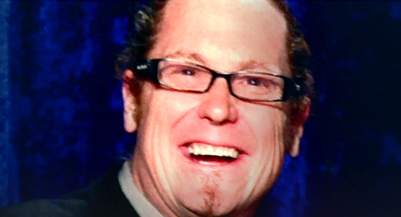
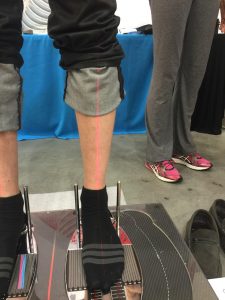
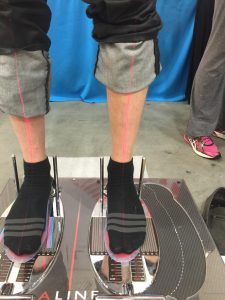
 About Gordon Hay
About Gordon Hay
